I am usually not big on dining at chain restaurants, let alone blog about them, so there has to be a pretty good PR hook for me to wound up doing both!
Shortly after sitting down at the table (all prepped with glasses and a handout,) Yuji educated us on the basics of sake, from the process of sake production, to the different qualities sake may exhibit, to what label terminologies mean, and of course, how to evaluate sake and how to pair it with food -- using wine as a comparison point. Here are some of the more interesting takeaways from the session:
- Using a wine glass to taste sake: Yuji is actually working on a glass design that will best exemplify a sake's unique aroma and texture, but in the meantime he noted his preference for a white wine glass, which allows the sake's fragrance to blossom and direct it towards the nostrils when sipping.
- When shopping for sake in markets, try to buy the ones kept chilled: It's ideal when stored in the high 30s, so those kept at room temperature on store shelves may not be as tasty.
- Junmai here, not so much there: Because of tax regulations in U.S., the vast majority of sake consumed here are junmai (pure rice a.k.a. unfortified) sake, whereas in Japan it's mostly about drinking the fortified variety, since they believe the extra alcohol enhances the flavor and extends shelf life (not to mention get happy faster,) and on that note . . .
- When ordering sake in Japan, be sure ask for nihonshu: since 'sake' is a generic term for any alcohol, so you may wound up getting a glass of beer instead. And please, avoid the "Sake to me..."
- Pricey sake isn't necessarily good tasting sake: The price is usually more reflective of how much the sake's been processed (from polishing the rice, time it takes to ferment, etc.) but he noted that the daiginjo label (rice polished to half its weight, or less) doesn't automatically suggest it's a great-tasting brew.
- Warm sake isn't necessarily bad sake, likewise, not all bad sakes should be warmed up: while warming does mellow out some of the harsher edges notable in low-quality sakes, Yuji pointed out that there is a range of sake textures and flavors that are great when warmed up (more on that later) and that some low-quality sakes are actually best when consumed chilled.
The last two were points Yuji brought up when I asked him what misconceptions about sake he would like to dispel. Following up on that, he also talked about the lack of ready knowledge on bottle labels. Unlike wines where you can get a general idea of its expected taste based on grape's varietal and region, sakes can exhibit a great range of flavors even with similar labeling.
As such, Yuji is developing a seasonal sake map of sorts* which he hopes will be implemented in the U.S. labeling of sake -- from Spring suggestive of lighter body and fruity-floral aromas (and better paired with vegetables or light seafood dishes) to Winter which is heartier, fuller and has more a aged-savory smell (and nice with a good ole slab of steak.) And the best sakes to consume are those in the summer-fall to fall-winter categories, primarily those with a tangy smell.
After our discussion, Yuji showed us how to sample sakes (very similar to wines, observe color, then swirl and sniff, then sip) and how to see how it works with food (sip sake, taste food, sip it again.) I must say, there were some interesting magic going on in there, particularly when a light and grassy Otokoyama was tasted alongside their cured salmon with kiwi and orange, or when the richer, melony Nanbu Bijin was paired with the lightly fried tempura. The flavors of the sake and the food built upon each other, and left us hungry (and thirsty) for more. (Sidenote: if there was only one sake that Yuji would order, the Nanbu Bijin would be it -- noting that it's very versatile and would go well with both lighter dishes such as sashimi and still hold its own against heftier beef or pork dishes.)
And finally, we had to ask "Sake? in a cocktail? really?!" To this, Yuji confess he's not a sake purist and he's open to mixing, shaking, muddling them up with other things (though, like any other spirit, the best sakes are best enjoyed on their own.) In making cocktails with sake, he emphasize adding a distilled spirit (such as shochu) so the alcohol doesn't become too diluted (much like how the wine-based sangrias would include a spirit) and to build upon restaurant's theme, he prefers adding Asian flavor components, such as yuzu juice in their Tokyo Mojitos, or Saketinis in flavors like Fuji Apple, Shiso-Plum and Lychee-Lime.
As a parting farewell, Yuji left us each with a Tokyo Mojito (cucumber for Caroline, strawberry for me) and two of Kabuki sushi rolls, the Lotus on Fire (california roll topped with spicy tuna and fried lotus chip) and pictured-above Kabuki Roll (spicy crunch roll topped with assorted seafood) -- both rolls were OK for what they were, but I was delighted at how the mojito built upon the spiciness, letting it linger with a constant playful tingle without letting it get overwhelmingly hot.
Leaving Kabuki with Caroline (and onto a mediocre dessert + cocktail stop at Delphine at Hollywood's W Hotel,) I was definitely left with a better knowledge and appreciation for sake, and can't wait to impress friends with a tasty bottle for the next BYO meal or perhaps mix up a cocktail that plays up sake's unique dimensions. As for the restaurant itself, the food's alright in the modernized/fusioned Japanese food sense, but I'm rather impressed by the "accessible seriousness" of their sake program (their menu makes it easy to pick out a sake to pair with your dishes, and the it has a nice price range depending on how much you can afford,) so I'm definitely open to returning to have a few nibbles to go with my intro foray into sake. Here's hoping I can put together a magical pairing on my own . . .
Kabuki Hollywood (and other locations)
1545 Vine Street
Los Angeles, CA 90028-7304
(323) 464-6003
Website
You can also follow Yuji via twitter here
P.S. Thanks to Uncouth Gourmands for posting the Matsumoto Sake Map

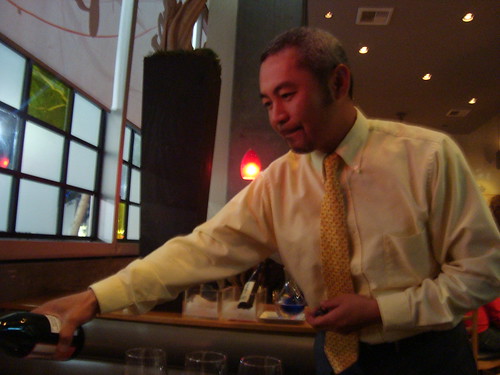
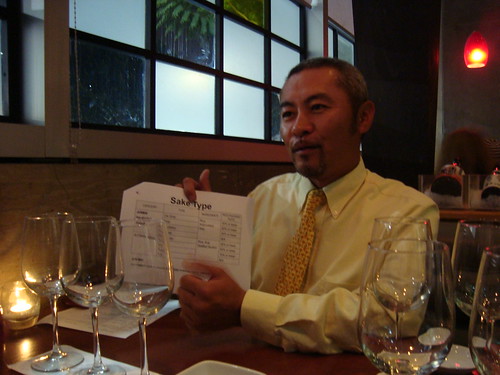
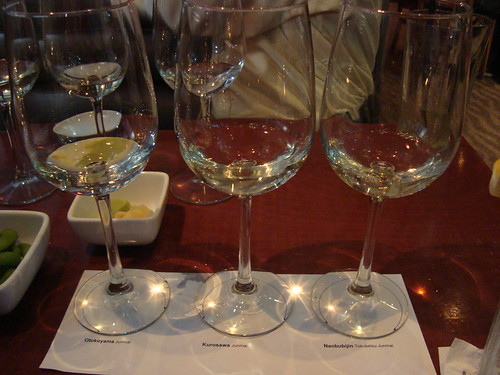
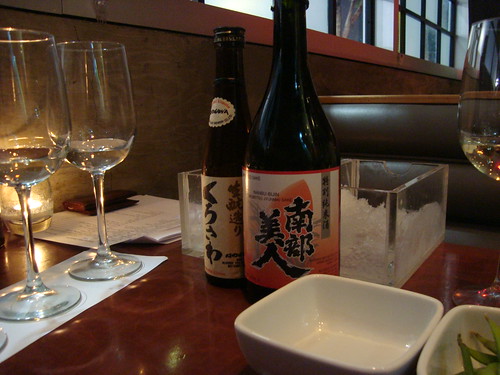

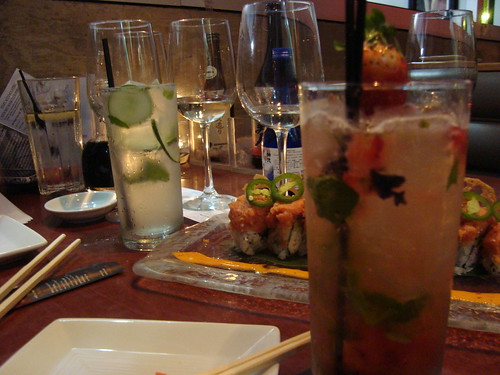
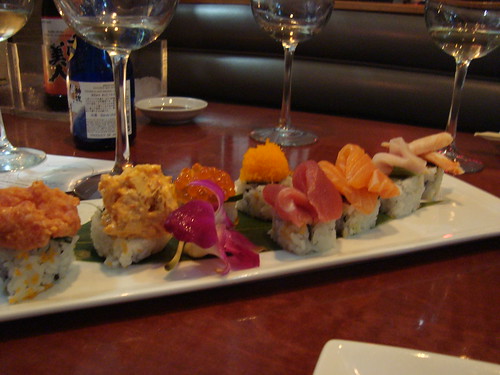

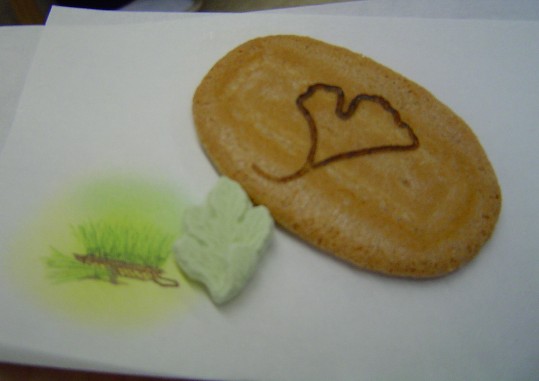




2 comments:
Good times, H.C.! Kabuki grows cooler by the minute, especially with Yugi on their team.
I'm sorry I missed that blogger dinner too. Thanks for sharing the sake info. I never feel like I learn enough.
Post a Comment